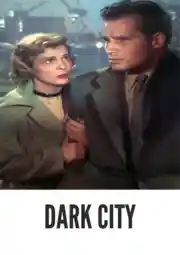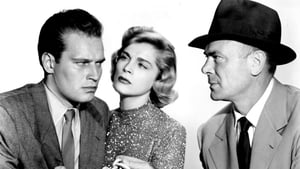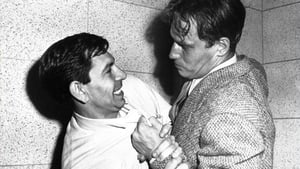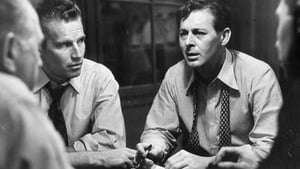Contact: [email protected]
Video Sources 0 Views

Synopsis
[ez-toc]




Rediscovering the Noir Elegance: “Dark City Colorized” (1950) in Color
In the vast tapestry of classic cinema, certain films stand as luminous beacons, guiding us through the corridors of time. Among these gems, “Dark City Colorized” (1950) emerges as a noir masterpiece, a cinematic journey into the shadows of a bygone era. Directed by the visionary William Dieterle and starring the iconic trio of Charlton Heston, Lizabeth Scott, and Viveca Lindfors, “Dark City Colorized” has etched its name into the annals of film history. However, recently, this classic has undergone a transformation that has sparked both curiosity and controversy—colorization.
Read Media File Transfer Agreement: Terms and Conditions
Read FAQ
The Artistic Vision of “Dark City Colorized”
To comprehend the significance of colorizing “Dark City Colorized,” we must first delve into the artistic vision that brought the original black-and-white masterpiece to life. Directed by William Dieterle, a maestro of noir aesthetics, the film unfolds in a shadowy world of crime, corruption, and moral ambiguity.
Charlton Heston, in one of his early career roles, commands the screen as Danny Haley, a morally conflicted gambler navigating the treacherous underworld. Lizabeth Scott’s portrayal of Fran Garland, the enigmatic femme fatale, adds layers of complexity to the narrative, while Viveca Lindfors lends a poignant touch to the supporting cast. Dieterle’s directorial finesse is evident as he weaves a visual tapestry of chiaroscuro, immersing the audience in the bleak and mysterious atmosphere of “Dark City Colorized.”
The Process of Colorization in Film
Colorization of black-and-white films has been a topic of heated debate within the film community for decades. The process involves meticulous techniques where color is added frame by frame to grayscale originals. While some argue that colorization breathes new life into old movies, purists staunchly maintain that it compromises the integrity of the director’s original vision.
Modern technology allows for a delicate dance between the grayscale and the vibrant palette, with skilled technicians employing advanced algorithms to simulate colors that resonate with the era in question. This practice, however, walks a tightrope between revitalizing a classic and potentially altering its intended atmosphere.
Pros and Cons of Revitalizing Old Movies with Color
As we tread the delicate terrain of colorizing classic films, it becomes imperative to weigh the potential benefits against the drawbacks. On one hand, introducing color may attract new audiences and bridge generational gaps, making old films more accessible. On the flip side, critics argue that this risks diluting the director’s original intent, transforming the nuanced grayscale nuances into a potentially garish interpretation.
The allure of black-and-white classics lies in their ability to evoke a specific mood and aesthetic, and colorization runs the risk of altering these fundamental elements. However, proponents suggest that colorization breathes new life into these films, allowing them to transcend the boundaries of time and resonate with contemporary viewers.
Preservation vs. Transformation: The Debate over Colorization
At the heart of the colorization debate lies the tension between preserving films in their original format and adapting them for modern audiences. Film preservationists ardently advocate for maintaining the artistic integrity of classics, arguing that altering the original vision compromises the historical significance of these cinematic treasures.
On the other hand, proponents of colorization argue that adapting old movies for modern viewers can rejuvenate interest in classic cinema. The debate becomes a delicate dance between honoring the past and ensuring these films remain relevant in an ever-evolving cinematic landscape.
Restoring “Dark City Colorized” to its Colorized Glory
The task of bringing “Dark City Colorized” into the colorized realm is no small feat. The restoration process demands a nuanced approach, balancing the enhancement of the visual experience with a deep respect for the director’s original intent. Preserving the noir aesthetic while adding color requires a meticulous understanding of the film’s atmosphere and mood.
Technicians engaged in the restoration process must navigate the fine line between elevating the film’s visual appeal and preserving the essence that made “Dark City Colorized” a noir classic. This delicate dance ensures that the colorized version pays homage to the original while offering a new lens through which audiences can experience the film.
The Significance of Old Movies in a Digital Age
In an era dominated by high-tech special effects and CGI, the enduring significance of old movies cannot be overstated. These films offer a unique charm, providing a glimpse into a bygone era of filmmaking where storytelling prowess took precedence over flashy visuals. The black-and-white aesthetic of classics holds a nostalgic allure, transporting audiences to a time when cinema was a blend of artistry and storytelling.
Influence on Modern Filmmaking: How Old Movies Shape the Industry
The impact of innovative techniques employed by directors like William Dieterle reverberates through the corridors of modern filmmaking. Contemporary directors draw inspiration from the timeless storytelling and visual flair of classic cinema, integrating these elements into their narratives. The enduring influence of old movies on the industry speaks to the timelessness of these cinematic treasures.
Experiencing “Dark City Colorized”: A Colorized Journey
Watching the colorized version of “Dark City Colorized” is a transformative experience, a visual feast that introduces the classic to a new generation. The addition of color does not overshadow the film’s original beauty but enhances its visual allure. The performances of Heston, Scott, and Lindfors retain their brilliance, now accentuated by the richness of color.
Contrasting the original black-and-white release with its colorized counterpart provides a fascinating exploration of how color can alter the emotional impact of a scene. It becomes a matter of personal preference – whether one values the authenticity of the director’s vision in its original form or appreciates the revitalized vibrancy brought by color.
Film Review: “Dark City Colorized” (1950) in Color
In stepping into the colorized world of “Dark City Colorized,” one encounters a film that successfully marries the essence of noir with the vibrancy of color. The hues do not distract but instead elevate the visual experience, offering a fresh perspective on a classic narrative. Heston, Scott, and Lindfors shine even brighter against the backdrop of the carefully chosen color palette.
While purists may argue that the original black-and-white release remains the definitive experience, the colorized version provides a gateway for new audiences to appreciate the film’s brilliance. The debate becomes less about which version is superior and more about celebrating the film’s ability to transcend time, offering a unique experience in both its original and colorized forms.
Conclusion
In concluding our exploration of “Dark City” in color, we find ourselves standing at the crossroads of tradition and innovation. “Dark City” (1950) stands not just as a relic of a bygone era but as a living testament to the enduring nature of classic cinema. Whether experienced in its original black-and-white glory or through the modern lens of colorization, the film captivates audiences with its noir magic.
As we navigate the debate over colorizing old movies, “Dark City” serves as a guiding star, urging viewers to explore the rich tapestry of classic films. Embrace the beauty of old cinema, in both its authentic black-and-white aesthetic and the vibrant world of colorized wonders. As we appreciate the past, let us also celebrate the enduring legacy of films that continue to shape the industry and our cinematic journey through time. “Dark City” beckons us to revel in its timeless elegance, inviting us to explore the nuanced dance between













